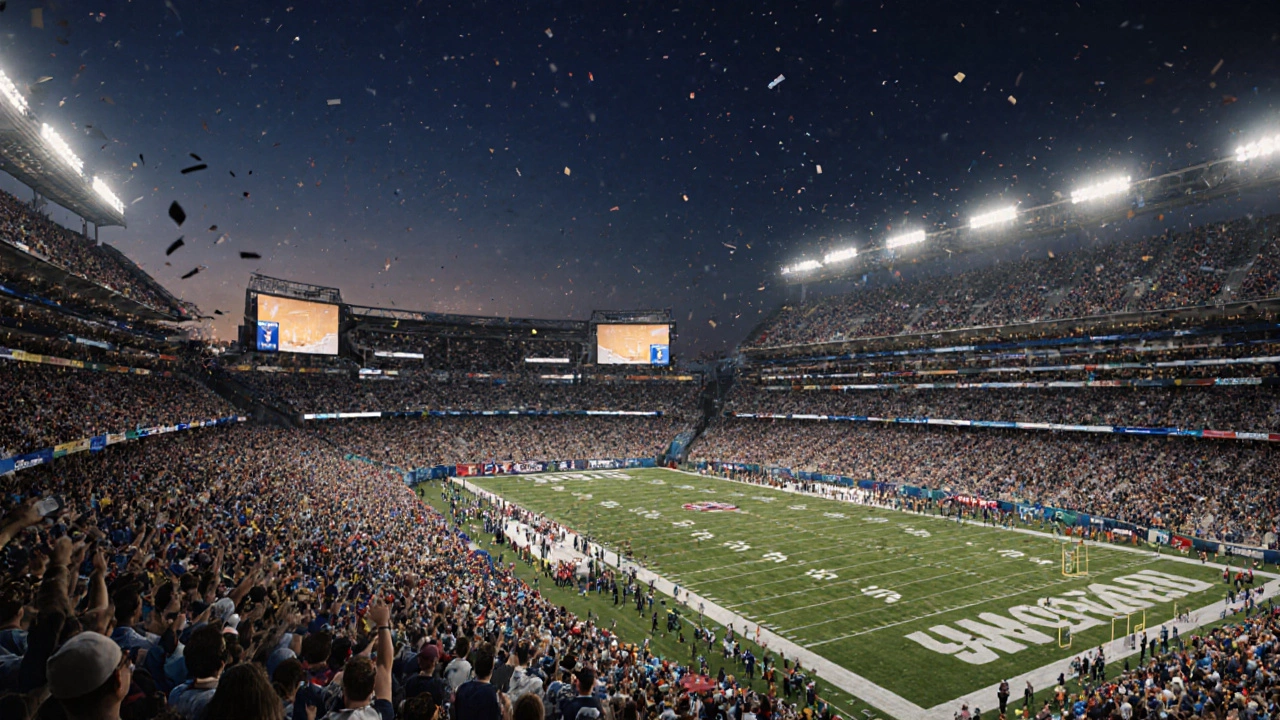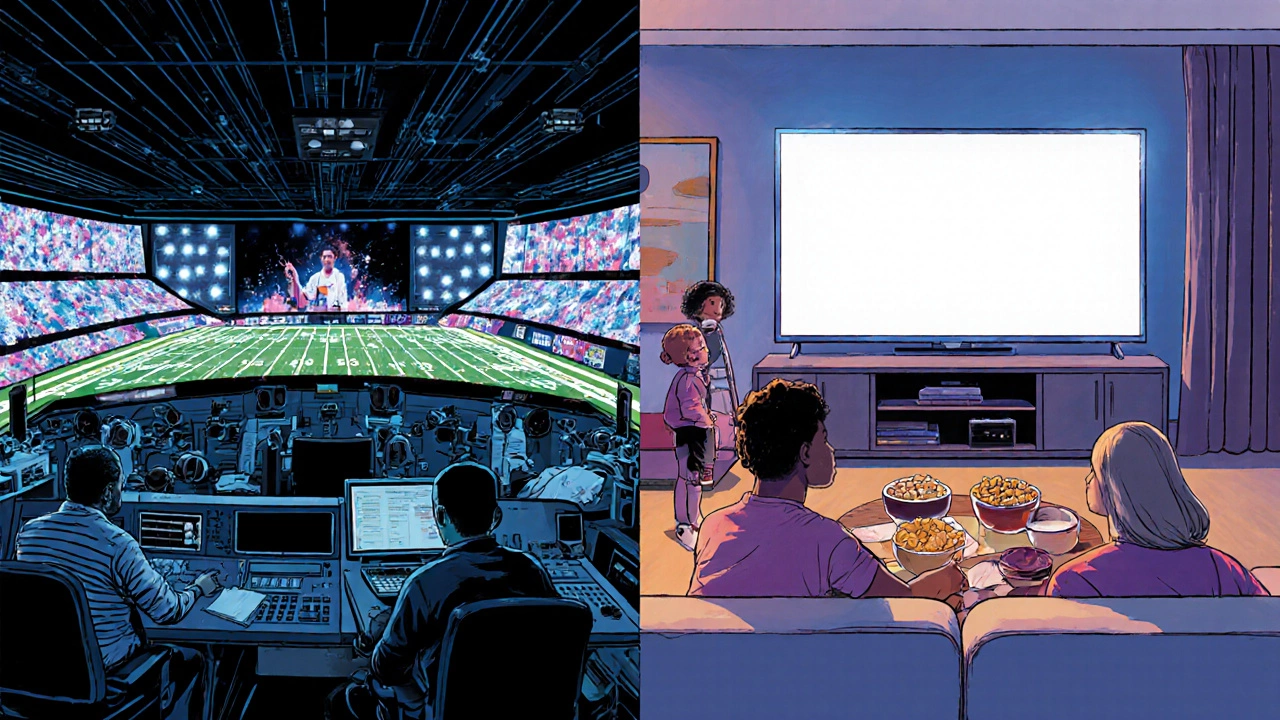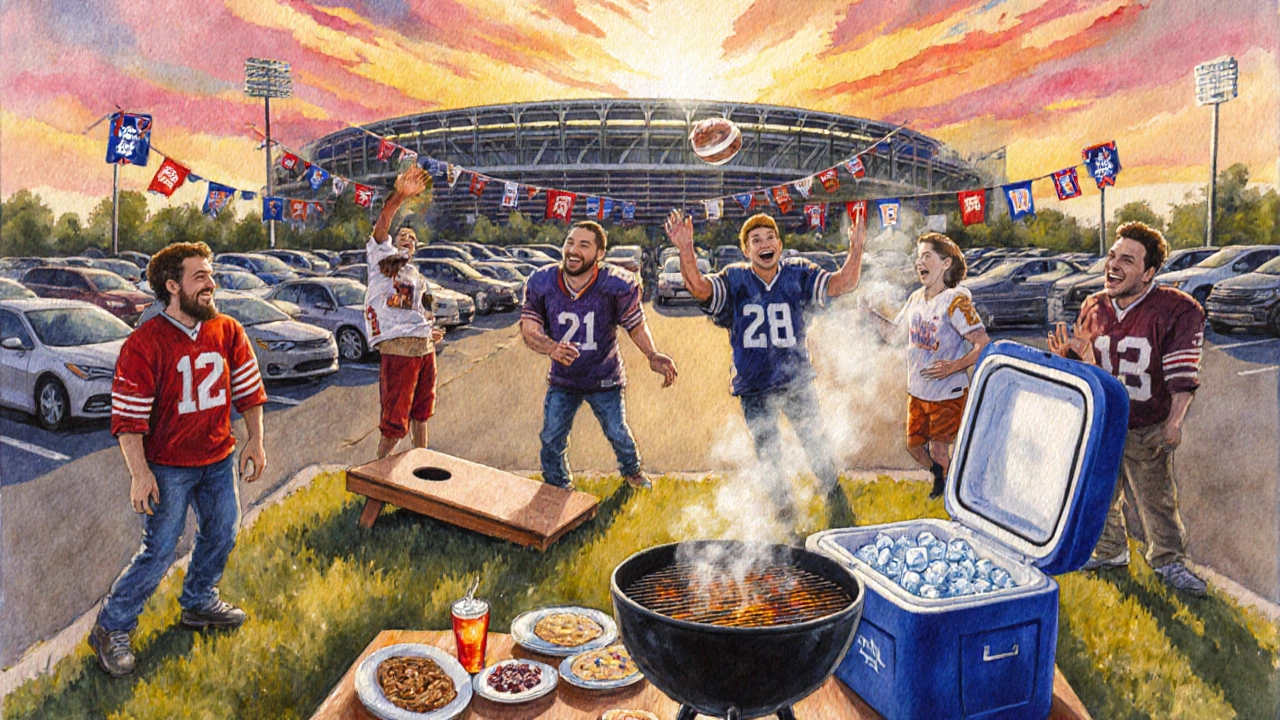Why Americans Are Crazy About American Football

U.S. Sports Viewership Comparison Tool
How Popular Are U.S. Sports?
Compare average viewership numbers for major sports events using data from the article.
Viewership Comparison
NFL Regular Season
16.5M
Super Bowl
115.0M
NBA Finals
15.4M
MLB World Series
12.1M
MLS Cup
2.4M
When you hear the word "football" in the United States, most people picture a massive stadium, a thunderous roar, and a game that’s as much a social ritual as a sport. American football is a high‑impact, strategy‑heavy game that has woven itself into the fabric of American life. Below we break down the cultural, historical, and economic forces that keep millions glued to the gridiron every Sunday, Thursday, and even on a Saturday in February.
How a Rough‑and‑Tumble Game Became a National Obsession
The roots of college football stretch back to the late 1800s, when elite East‑Coast schools staged matches that resembled rugby more than the modern sport. By the 1920s, professional leagues began to coalesce, but it wasn’t until the post‑World‑War II boom that the NFL (National Football League) found its footing as the country’s premier football organization.
Key moments solidified the NFL’s dominance: the 1958 "Greatest Game Ever Played" between the Baltimore Colts and New York Giants captured the first nationwide TV audience, while the 1966 merger with the rival American Football League (AFL) created a unified league that could negotiate lucrative broadcasting contracts. The result? A sport that grew hand‑in‑hand with the rise of television, creating a feedback loop where more eyes meant more money, which meant better talent and bigger spectacles.
Media Magic: TV Deals and the Super Bowl Phenomenon
One of the biggest drivers of fan love is the way television turned football into a shared experience. In the 1970s, the NFL secured a three‑year, $15 million deal with CBS - a figure that seems tiny now but was groundbreaking then. Fast forward to 2023, and the league signed a combined $110 billion contract with major networks and streaming services that spans a decade.
The Super Bowl epitomizes this synergy. It’s not just a championship game; it’s an advertising showcase, a halftime spectacle, and a cultural event that draws over 100 million U.S. viewers each year. The hype around Super Bowl commercials alone generates a separate buzz loop, pulling in even casual viewers who might otherwise skip sports.
Meanwhile, dedicated sports networks like ESPN keep the conversation alive year‑round with analysis shows, draft coverage, and the ever‑growing world of fantasy football. The constant stream of content turns players into household names and makes every weekly matchup feel personally relevant.
Community Rituals: Tailgating, Fantasy Leagues, and Game‑Day Traditions
Beyond the broadcast, the American football experience is built on rituals that turn a game into a communal celebration.
- Tailgating: Fans converge in parking lots hours before kickoff, firing up grills, playing cornhole, and swapping stories. It’s a low‑cost, high‑energy social gathering that turns strangers into teammates.
- Fantasy football: Since the early 2000s, millions of fans assemble virtual rosters, draft real‑world players, and compete weekly. The fantasy craze adds a layer of personal investment; suddenly a backup running back on a distant team becomes a key piece of your lineup.
- Game‑day parties: Families and friend groups often host watch parties, complete with themed snacks (think “football‑shaped” pizzas) and a scoreboard that mirrors the TV broadcast.
These rituals create a sense of belonging that transcends the actual sport. Whether you’re a die‑hard fan or a casual observer, the social glue of tailgates and fantasy leagues makes football feel like a shared holiday.

Economic Engine: Merchandising, Sponsorships, and Ticket Sales
Money fuels the love of the game, and the NFL’s financial ecosystem runs on several pillars:
- Broadcast Rights: As noted, multi‑billion‑dollar TV contracts are the league’s biggest revenue stream.
- Merchandising: From jerseys emblazoned with star players’ numbers to team‑branded hats, merchandise sales regularly top $7 billion annually.
- Sponsorships: Brands like Pepsi, Nike, and Verizon pay premium sums for stadium signage, halftime shows, and official partnership titles.
- Ticket Revenue: Despite rising ticket prices, average game‑day attendance remains above 66,000 fans per stadium, generating $5 billion in gate receipts each season.
These cash flows allow the NFL to invest in stadium upgrades, player safety initiatives, and community outreach programs, all of which reinforce a positive feedback loop of fan loyalty.
Why Football Beats Other Sports in the U.S.
America loves sports, but a few key differences set football apart from basketball, baseball, or soccer:
- Pacing and Drama: A typical NFL game has roughly 120 plays, each lasting around 4‑5 seconds, creating a stop‑and‑go rhythm that builds tension. The “four‑quarter clock” also amplifies each moment’s significance.
- Clear Narrative Arcs: The regular season leads to a single‑elimination playoff, culminating in the Super Bowl. This simple, knockout format feels more decisive than baseball’s lengthy series or soccer’s round‑robin formats.
- Physicality and Identity: The sport’s hard‑hitting nature aligns with American cultural ideals of toughness and teamwork, resonating especially in regions with strong blue‑collar traditions.
These factors combine to make football the go‑to sport for many families looking for a communal, high‑stakes event.

Numbers That Tell the Story
| League | Average Viewers per Game (Millions) | Key Event |
|---|---|---|
| NFL | 16.5 | Super Bowl (115.0) |
| NBA | d>3.2NBA Finals (15.4) | |
| MLB | 1.8 | World Series (12.1) |
| MLS | 0.7 | MLS Cup (2.4) |
The numbers make it clear: even the NFL’s regular‑season games outdraw other major leagues, and the Super Bowl’s viewership dwarfs all other U.S. sporting events combined.
Future Trends: What Keeps the Love Alive?
Looking ahead, a few trends will shape the next decade of American football fandom:
- Streaming Platforms: Services like Amazon Prime and Peacock are securing exclusive rights to Thursday Night Football, expanding reach to cord‑cutters.
- International Expansion: The NFL now holds regular‑season games in London and Mexico City, sparking curiosity among overseas audiences and feeding the domestic narrative of a "global" sport.
- Player Safety Innovations: Advances in helmet technology and concussion protocols aim to protect athletes, preserving the sport’s appeal to parents and youth leagues.
- Enhanced Fan Interaction: Augmented‑reality apps and in‑stadium experience upgrades let fans choose camera angles, access real‑time stats, and even vote on play‑by‑play commentary.
These developments suggest football’s cultural grip will stay strong, adapting to new media habits while keeping the core rituals that make Sundays special.
Quick Checklist: Why Americans Love Football
- Deep‑rooted history from college fields to a national league.
- Massive TV contracts that bring the game into living rooms.
- Tailgating, fantasy leagues, and watch parties create community.
- Big money from merch, sponsorships, and ticket sales fuels growth.
- Fast‑paced drama, clear playoff narrative, and physical intensity set it apart.
- Super Bowl as a cultural summit, drawing record audiences.
Is American football the most popular sport in the U.S.?
Yes, by viewership, revenue, and cultural impact, American football leads the pack. The NFL’s average regular‑season game draws about 16.5 million viewers, far surpassing the NBA, MLB, and MLS.
Why is tailgating such a big part of the football experience?
Tailgating turns a stadium visit into a weekend gathering. It offers food, music, and social interaction before the game, reinforcing camaraderie among fans and creating memories that extend beyond the final whistle.
How does fantasy football boost fan engagement?
Fantasy leagues give fans a personal stake in every player’s performance, encouraging them to watch games they might otherwise skip. This weekly involvement drives higher TV ratings and deeper social media conversations.
What role does the Super Bowl play in American culture?
Beyond being the championship game, the Super Bowl is a national event with elaborate halftime shows, high‑profile commercials, and widespread parties. It unites people from all walks of life into a single viewing experience.
Will streaming replace traditional TV for football fans?
Streaming is growing fast, especially among younger viewers. However, most fans still rely on cable for live games, so the two formats will coexist for the foreseeable future.
